CUKKU
(Dried Rhizome) - ²‚°
Cukku is the dried rhizome of Zingiber
officinale Rosc. (Fam. Zingiberaceae), widely cultivated in
India; rhizomes dug in January - February, buds and roots removed, soaked
overnight in water, decorticated and some times treated with lime and dried. It
grows in Ku¼iµci and Marutham thi¸ai.
SYNONYMS
Tamil : Cu¸·i (²‡®), Ularnta Iµci (àô˜‰î
Þ…C), V®rkkompu («õ˜‚ªè£‹¹), Vi·am£·iya
Amirtam (MìÍ®ò ÜI˜î‹)
Assamese : Adasuth,
Aadar shuth
Bengali : Suntha,
Sunthi
English : Ginger
root, Ginger
Gujrati : Sunth, Sundh, Suntha
Hindi : Sonth
Kannada : Shunthi
Kashmiri : Shonth
Malayalam : Chukku
Marathi : Sunth
Oriya : Sunthi
Punjabi : Sund
Sanskrit : Ardraka,
Ausadha, Mahausadha, Visvabhesaja, Srngavera, Visva, Visvausadha
Telugu : Sonthi, Sunti
Urdu : Sonth, Zanjabeel
DESCRIPTION
a)
Macroscopic
Rhizome, laterally compressed bearing
short, flattish, ovate, oblique, branches on upper side each having at its apex
a depressed scar, pieces about 5 to15 cm. long, 1.5 to 6.5 cm. wide usually 3
to 4 cm. and 1 to 1.5 cm. thick; externally buff coloured showing longitudinal
striations and occasional loose fibres; fracture short, smooth, transverse
surface exhibiting narrow cortex, (about one-third of radius) a well-marked
endodermis, a wide stele showing numerous scattered fibro-vascular bundles and
yellow secreting cells when examined under 10x lens; odour agreeable and
aromatic; taste agreeable and pungent.
b)
Microscopic
Transverse section of rhizome shows
cortex of isodiametric thin-walled parenchyma with scattered vascular strands
and numerous isodiametric idioblasts, about 40 to 80 µm in diameter containing
a yellowish to reddish-brown oleo-resin; endodermis slightly thick walled, free
from starch; immediately inside endodermis a row of nearly continuous
collateral bundles usually without fibres, stele of thin-walled, parenchyma
cells, arranged radially around numerous scattered, collateral vascular
bundles, each consisting of a few unlignified, reticulate or spiral vessels
upto about 70 µm in diameter; a group of phloem cells, unlignified, thin-walled;
septate fibres upto about 30 µm wide and 600 µm long with small oblique slit
like pits present; numerous scattered idioblasts, similar those of cortex, and
associated with vascular bundles, also present; idioblasts about 8 to 20 µm
wide and upto 130 µm long with dark
reddish-brown contents; in single or in axial rows, adjacent to vessels,
present; parenchyma of cortex and stele packed with flattened, rectangular,
ovate starch grains upto 60 µm long about 25 µm wide and 7µm thick, marked by
fine concentric striations.
Powder:
Cream; shows groups of polygonal thin
walled parenchyma cells; yellowish to reddish brown oleo-resin cells;
unlignified fibres, vessels with annular,
reticulate or spiral thickening; numerous round to oval starch grains upto 60 µm long, about 25 µm
wide and 7 ìm thick marked by fine concentric striations.
IDENTITY,
PURITY AND STRENGTH
Foreign
matter Not more than 1
per cent, Appendix 2.2.2.
Total
Ash Not more than 6
per cent, Appendix 2.2.3.
Water
soluble ash Not more than 1.5
per cent, Appendix 2.2.5.
Alcohol-soluble
extractive Not less than 3
per cent, Appendix 2.2.6.
Water-soluble
extractive Not less than 10
per cent, Appendix 2.2.7.
T.L.C.
T.L.C.
of the Alcoholic extract on silica gel 'G' plate using n-Hexane: Diethyl ether
(4:6) v/v shows two spots under (UV
light 366 nm) at Rf. 0.55 and 0.60 (both sky blue). On exposure to iodine
vapours seven spots appear at Rf. 0.23,
0.27, 0.43, 0.50, 0.55,0.81 and 0.94(all yellow). On spraying with Vanillin-
Sulphuric acid reagent and heating the plate, for five minutes at 105°C eight
spots appear at Rf. 0.23 (blackish brown), 0.27 (blackish brown), 0.37
(violet), 0.50 (violet), 0.60 (brown), 0.67 (brown), 0.81 (violet) and 0.94
(violet).
CONSTITUENTS
Gingerols, shogaols,
dihydrogingerol, gingerdione, hexahydrocurcumin and desmethyl
hexahydrocurcumin, á -zingiberene, ß-sesquiphellandrene, ar-curcumene, lipids,
proteins, fats, waxes, and starch.
PROPERTIES
AND ACTIONS
Cuvai
: K¡rppu
(裘Š¹)
Gu¸am
: Ilaku (Þô°), Noymai (ªï£Œ¬ñ)
V¢rium
: Veppam (ªõŠð‹)
Pirivu
: K¡rppu
(裘Š¹)
Ceykai
: Aka··uv¡yvaka¼¼i
(Ü膴õ£ŒõèŸP),
Pacitt¢t£¸·i (ðCˆbɇ®), Veppamu¸·¡kki (ªõŠðº‡ì£‚A)
IMPORTANT
FORMULATIONS
Cukku Tailam (²‚° ¬îô‹), Ól¡tic C£ra¸aÆ
(ãô£F„ Åóí‹),
Nilav¡kaic C£ra¸am (Gôõ£¬è„ Åóí‹), Paµcat¢p¡kkiºi C£ra¸am (ð…êbð£‚AQ
Åóí‹), P¡vaºakka·ukk¡y (ð£õù‚贂裌),
Tayircu¸·icc£ra¸am (îJ˜²‡®„Åóí‹), Tirika·ukuc C£ra¸am (FKè´°„
Åóí‹)
THERAPEUTIC
USES
COUGH,FLATULENCE,INDIGESTION,VATHA DISEASES,MIGRANE,SINUSITIS
DOSE
-
Powder 500 mg - 1g










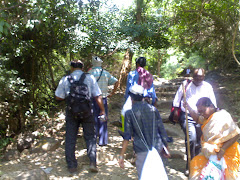
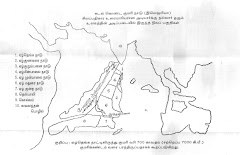



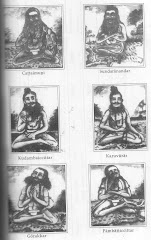
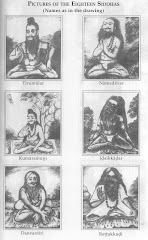




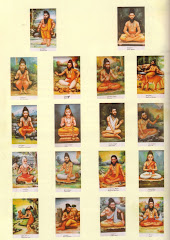
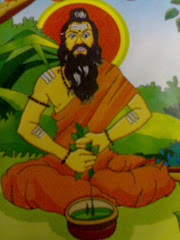

0 comments:
Post a Comment